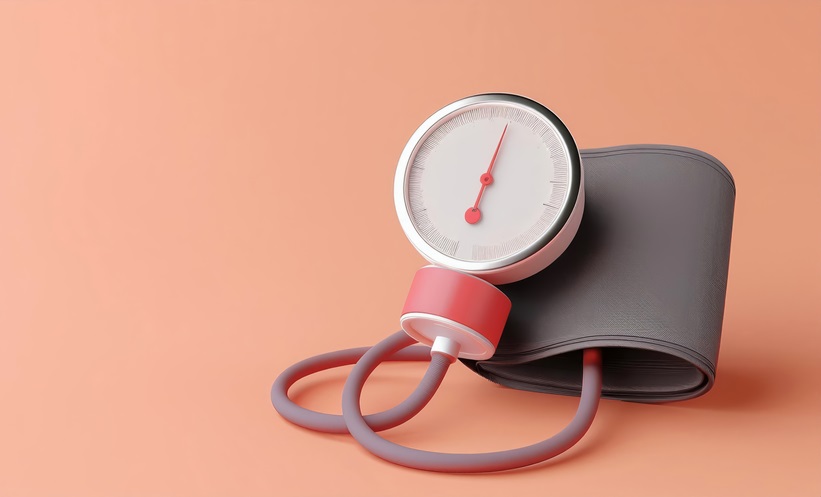Known as the largest cardiovascular conference in the world, it was apt that the high standards of the European Society of Cardiology (ESC) were matched by this year’s ESC Congress host city of Munich, Germany, where the event returned for the fourth time. During the 5-day meeting, from 25th–29th August 2018, the Internationales Congress Center München (ICM) was brought to life by an impressive total of >32,000 healthcare professionals passing through its doors, ready to hear the breaking news from cardiovascular researchers.
Although great demands were placed on the city, Munich’s pride in hosting this prestigious event was clear on arrival, with ESC branding displayed throughout Munich International Airport to welcome delegates from a record-breaking 156 countries. The city’s unique marketing activities fostered feelings of unity and empowerment, which were strengthened as attendees arrived in their masses at the main auditorium for the 2018 Inaugural Session at the end of Day 1. After an innovative, futuristic welcome from ESC President Prof Jeroen Bax, a very special guest addressed the audience in an exclusive video interview: Barbra Streisand. Proving the great work of the ESC reaches far and wide, the music legend explained why she is a passionate advocate for heart health and how she established the Barbra Streisand Women’s Heart Center. From one inspiring figure to another, distinguished cardiology researcher Prof Eugene Braunweld took to the stage to highlight some of the momentous cardiology events that have taken place during his long career, to rapturous applause from the crowd. Following the presentation of the ESC Gold Medals to worthy winners Marc Pfeffer, Ottavio Alfieri, and Evgeny Shlyakhto and the naming of the newly elected fellows of the ESC, Prof Bax announced the official opening of this year’s ESC Congress to the sound of traditional Bavarian music.
With such a momentous opening ceremony, it was clear that the following 4 days were going to be packed full of inspiring, field-changing advances from the cardiology sphere. Living up to the ESC motto of ‘Our Diversity is Our Strength’, attendees from across the globe were offered sessions on every cardiology subspeciality in the form of 92 late-breaking science studies and 4,500 abstracts presented in 500 expert sessions. Some major studies presented at this year’s congress, including the MARINER, CAMELLIA-TIMI, and High-STEACS investigations, are set to revolutionise the treatment and lifestyle management of cardiovascular patients; continue reading for more details of these studies and many more. “The major clinical trials presented at ESC Congress 2018 reflect the growing reputation of our meeting as ‘the’ place to be to receive the latest updates in cardiology,” reflected Prof Stephen Achenbach, Chair of the Congress Programme Committee.
Devoting much attention to this year’s congress spotlight of valvular heart disease, many new features were introduced at the 2018 event to enhance learning, including a ‘Cardiology in 4 Days’ track, a dedicated ‘Library Room’ lecture hall, and two ‘Science Boxes’ for oral presentations. Continuous development was also key for the congress organisers, with four sessions devoted to updates on Clinical Practice Guidelines on syncope, myocardial revascularisation, cardiovascular disease in pregnancy, and arterial hypertension. As well as three large exhibition halls displaying the very latest opportunities from industry and digital health, delegates were appreciative of the ESC-branded deckchairs where they could take some time to reflect, network, and enjoy Munich’s last weekend of summer.
As the hugely successful ESC Congress 2018 drew to a close, Prof Bax reflected on his time as ESC President during the General Assembly and thanked the 2016–2018 ESC Board members, before handing his title to Prof Barbara Casadei. Now ESC President for 2018–2020, Prof Casadei described her vision for the society, stating: “To maintain high standards and the legacy of the present, we must continually evolve to be fit for the future.” Whether you were unable to attend this year’s ESC Congress or you would simply like to re-live the momentous occasions from the event, EMJ Cardiology 6.1 provides a comprehensive overview of the annual meeting and shows that the future of cardiology is bright for clinicians, researchers, and, most importantly, patients. Continue reading for detailed congress highlights, late-breaking trial results, and abstract reviews to enhance your daily work and set the scene for the ESC Congress 2019. With a spotlight on Global Health, we are already looking forward to next year’s annual meeting and hope to see you all there in Europe’s largest conference complex in Paris, France.

Findings from the MARINER Trial: Oral Anticoagulant Use
RESULTS from the hotly anticipated MARINER trial were presented at the ESC Congress 2018 during a Hot Line Session and reported in a ESC press release dated 26th August 2018. Conducted at the Donald and Barbara Zucker School of Medicine at Hofstra/Northwell, New York City, New York, USA, the MARINER trial was designed to investigate the effects of an anticoagulant regimen post hospital discharge on the formation of blood clots. Patients were randomly allocated in a 1:1 ratio1 to a 45-day course of either oral rivaroxaban 10 mg once per day (7.5 mg for patients with a reduced kidney function) or placebo upon leaving the hospital.
The primary safety outcome of the trial was major bleeding and the primary efficacy outcome was a composite measure of any symptomatic venous thromboembolism and death related to venous thromboembolism. The two components of the primary efficacy outcomes were the prespecified secondary efficacy outcomes, which were analysed separately.
The primary efficacy outcome occurred in 0.83% of 6,007 patients in the treatment arm and 1.10% of patients in the placebo arm (hazard ratio [HR]: 0.76; 95% confidence interval [CI]: 0.52–1.09; p=0.14). As the primary efficacy outcome was not achieved, the subsequent efficacy analyses of the secondary outcomes were exploratory. Symptomatic venous thromboembolism occurred in 0.18% of patients in the treatment arm and 0.42% of patients in the placebo arm (HR: 0.44; 95% CI: 0.22–0.89) and venous thromboembolism-related death occurred in 0.72% of patients in the treatment arm and 0.77% of patients in the placebo arm (HR: 0.93; 95% CI: 0.62–1.42). The primary safety outcome, major bleeding, occurred in 0.28% of patients in the treatment arm and 0.15% of patients in the placebo arm (HR: 1.88; 95% CI: 0.84– 4.23; p=0.124).1
The researchers concluded that the MARINER trial did not show a significant benefit associated with the post-discharge rivaroxaban treatment regimen and noted: “…the usefulness of extended thromboprophylaxis remains uncertain.” They recommended that future studies focus on the highest-risk patients, as they are the most likely to benefit from anticoagulant prophylaxis.
References
- Spyropoulos AC et al.; MARINER Investigators. Rivaroxaban for thromboprophylaxis after hospitalization for medical illness. N Engl J Med. 2018. [Epub ahead of print].
Daily Aspirin Prevents Heart Attack
DAILY aspirin has long been associated with beneficial effects for individuals who have had a heart attack or stroke, preventing a second adverse cardiac event; however, the prophylactic use of aspirin in patients who have not had a heart attack is still debated. The results of the hotly anticipated ARRIVE study, aimed at settling this argument, were presented in a ESC press release dated 26th August 2018.
The use of aspirin to prevent first adverse cardiac events is still unclear; with conflicting results published across the different clinical trials, critics highlight the increased risk of major bleeding following aspirin administration. With a primary endpoint of occurrence of composite cardiovascular death, myocardial infarction, unstable angina, stroke, and transient ischaemic heart attack, the ARRIVE study, led by Prof J. Michael Gaziano, Brigham and Women’s Hospital, Boston, Massachusetts, USA, recruited 12,546 patients (average age: 63.9 years, 29.7% female) with no prior history of vascular events but a moderate risk of cardiovascular events in 10 years, from the USA, Poland, UK, Germany, Italy, Ireland, and Spain. The patients were split into two groups, one receiving 100 mg aspirin daily and the other a placebo.
Intention-to-treat analysis showed that the primary endpoint occurred in 4.29% of the aspirin group compared with 4.48% of the placebo group (hazard ratio [HR]: 0.96; 95% confidence interval [CI]: 0.81–1.13; p=0.60), while per-protocol analysis identified the primary endpoint occurred in 3.40% of the aspirin group and 4.19% of the control group (HR: 0.81; 95%; CI: 0.64–1.02; p=0.0756). Further per-protocol investigation revealed that daily aspirin reduced the risk of total and nonfatal myocardial infarction (HR: 0.53, 95% CI: 0.36–0.79; p=0.0014; HR: 0.55, 95% CI: 0.36–0.84; p=0.0056, respectively).
Intention-to-treat analysis of the risks of the aspirin regimen showed that, while the incidence of most adverse effects was similar between the two groups, gastrointestinal bleeds occurred more frequently in individuals in the aspirin group compared to the control group (61 versus 29, respectively; HR: 2.11; 95% CI: 1.36–3.28; p=0.0007).
“Participants who took aspirin tended to have fewer heart attacks, particularly those aged 50–59 years, but there was no effect on stroke,” summarised Prof Gaziano. He concluded: “The decision on whether to use aspirin for protection against cardiovascular disease should be made in consultation with a doctor, considering all the potential risks and benefits.”

Novel Heart Attack Identification Assay Causes Change in Diagnosis
RETHINKING the Universal Definition of Myocardial Infarction (MI) could be on the horizon after the first randomised trial testing the criteria used to diagnose heart attacks suggests that regulation needs to move away from the traditional binary threshold. The pioneering High-STEACS trial set out to understand whether implementation of a high-sensitivity cardiac troponin I assay along with a sex-specific 99th percentile diagnostic threshold would reduce subsequent MI or cardiovascular death at 1 year in patients with suspected acute coronary syndrome.
Reported in a ESC press release dated 28th August 2018, a total of 48,282 consecutive patients suspected of having acute coronary syndrome were enrolled from 10 hospitals in Scotland. A validation period over the first 6 months of the study used the traditional assay, after which hospitals were randomly allocated to carry out either early (at 6 months) or late (at 12 months) implementation of the high-sensitivity assay to guide clinical decisions using the 99th percentile as the diagnostic threshold. Patients were followed-up for 18–27 months and then for the following year.
Results showed that the implementation of the high-sensitivity cardiac troponin test increased the frequency of identification of patients with myocardial injury, but only one-third had a diagnosis of MI. These results suggest that clinicians were more confident ruling out MI when using the high-sensitivity assay. Length of stay was doubled in MI patients but halved in those without myocardial injury, and was reduced by one-third across the trial population. Follow-up results showed that at 1 year there was no improvement in recurrence rates of MI or cardiovascular death.
Principal investigator Prof Nicholas Mills, University of Edinburgh, Edinburgh, UK, summarised the results: “The findings were surprising and initially disappointing. But it was encouraging that there was no evidence of misdiagnosis, inappropriate treatment, excess bleeding, or harm.” The study results question the current guidelines for diagnosing MI and definitely warrant further investigation.
Lorcaserin Does Not Increase Risk of Cardiovascular Events
WEIGHT LOSS drug lorcaserin can be used by high-risk cardiovascular patients without increasing their risk of major adverse cardiovascular events (MACE), according to newly released results of the CAMELLIA-TIMI 61 trial. Announced at the ESC Congress 2018 and reported in a ESC press release dated 26th August 2018, this is the first dedicated cardiovascular outcomes trial to demonstrate cardiovascular safety of any weight loss agent.
To examine the safety and efficacy of lorcaserin, the trial enrolled 12,000 adults (64% male) from 473 centres across eight countries who had a BMI ≥27 kg/m2 and either cardiovascular disease or diabetes with at least one other cardiovascular risk factor. The participants, who had an average age of 64 years, were randomised in a 1:1 ratio to 10 mg lorcaserin twice daily or placebo.
The primary safety endpoint of the trial was non-inferiority of lorcaserin compared to placebo for MACE and was successfully achieved, with MACE occurring in 6.1% of lorcaserin patients versus 6.2% of those on placebo (p<0.001). However, lorcaserin was not shown to be superior to placebo in terms of MACE plus hospitalisation for heart failure, unstable angina, or coronary revascularisation. With regard to its efficacy in assisting weight loss, 39% of lorcaserin patients had lost ≥5% of their body weight at Year 1 compared to 17% of the placebo group (p<0.001), and this statistically significant difference remained for 3.3 years of follow-up.
Commenting on these promising results, trial investigator Dr Erin Bohula, Brigham and Women’s Hospital, Massachusetts, Boston, USA, explained: “We have been able to show for the first time that this weight loss drug does what it is intended to do. It helps people lose weight without causing an increase in MACE in a population at higher risk for heart attacks and strokes.” Compared to placebo, the drug also reduced the conversion rate from pre-diabetes to diabetes and led to small improvements in blood pressure, heart rate, and blood glucose and triglyceride levels; however, while cardiovascular risk was reduced, there was no substantial cardiovascular benefit shown.
Although approved by the U.S. Food and Drug Administration (FDA) in 2012 for aiding weight loss in certain high-risk cardiovascular patients, lorcaserin is not approved in Europe due to concerns regarding malignancy, heart valve problems, and psychiatric disorders. However, CAMELLIA-TIMI 61 showed no significant difference in tumours or valvular disease at 1 year between lorcaserin and placebo, providing hope for European approval of lorcaserin in the near future.

High-Density Lipoprotein: Not as Good as it Seems?
HIGH-DENSITY lipoprotein (HDL) cholesterol, known to be the ‘good’ form of cholesterol, may be dangerous to health when present in very high levels. According to research reported in a ESC press release dated 25th August 2018, high levels of HDL cholesterol may be linked to an increased risk of heart attacks and death.
Researchers from the Emory University School of Medicine, Atlanta, Georgia, USA, recruited 5,965 patients, most of whom had heart disease, with an average age of 63 years and a split of 65% males and 35% females. The participants were separated into five groups based on their HDL levels: <30 mg/dL, 31–40 mg/dL, 41–50 mg/dL, 51–60 mg/dL, and >60 mg/dL.
At a median follow-up of 4 years, it was found that 769 (13%) of the study participants had experienced a heart attack or had died from a cardiovascular event. Individuals in the 41–50 mg/dL and the 51–60 mg/dL groups had the lowest risk of a heart attack or death. Risk of heart attack or death was increased in both the low HDL level groups (<41 mg/dL) and the very high HDL level group (>60 mg/dL), with those in the very high HDL level group having an almost 50% increased risk of heart attack or death compared to those with HDL levels of 41–60 mg/dL.
When taking into account other risk factors for heart disease, such as low-density lipoprotein, smoking, and diabetes, and factors associated with high HDL levels, such as race, sex, and alcohol intake, it was found that the results remained consistent.
In addition, the results supported those studies testing the same theory. Study author Dr Marc Allard-Ratick, Emory University School of Medicine, said: “Our results are important because they contribute to a steadily growing body of evidence that very high HDL cholesterol levels may not be protective, and because unlike much of the other data available at this time, this study was conducted primarily in patients with established heart disease.”
Dr Allard-Ratick also highlighted that further research is needed in order to establish the mechanisms behind the increased risk of heart attacks, other cardiovascular events, and death with higher HDL levels, but concluded: “One thing is certain: the mantra of HDL cholesterol as the ‘good’ cholesterol may no longer be the case for everyone.”
New Data in the Debate Over Low Carbohydrate Diets
CHALLENGING conventional wisdom was the topic of discussion at a ESC press conference in which the results of the NHANES trial were presented, detailing the findings that a long- term low carbohydrate diet is in fact linked to a greater risk of all-cause death, as well as death caused by a number of cardiovascular and other chronic conditions. Reported in a ESC press release dated 28th August 2018, the study has added new data to the conflicting results that have been produced by earlier studies about this controversial diet.
This prospective study assessed a nationally representative sample of 24,825 patients from 1999–2010 to evaluate the link between low carbohydrate diets, all-cause death, and deaths from coronary heart disease, cerebrovascular disease (such as stroke), and cancer. Participants were divided into quartiles based on carbohydrate intake; they had an average age of 47.6 years and 51% were female. Results indicated that, over an average 6.4-year follow-up, the risk of all-cause death was 32% higher in the quartile with the lowest intake compared to the quartile with the highest intake of carbohydrates. The risk of death from coronary heart disease, cerebrovascular disease, and cancer increased in the lowest quartile by 51%, 50%, and 35%, respectively. In addition to these findings, researchers reported a rise in the risk of each type of death with each drop in carbohydrate intake, which remained significant following adjustment for potentially contributary factors.
Furthermore, the data were confirmed by the results of a meta-analysis of seven prospective cohort studies enrolling 447,506 patients for an average follow-up of 15.6 years. This demonstrated that risk of total, cardiovascular, and cancer mortality increased by 15%, 13%, and 8% in the lower compared to the higher carbohydrate intakes, respectively.
Prof Maciej Banach, Medical University of Lodz, Lodz, Poland, commented: “Low carbohydrate diets might be useful in the short term to lose weight, lower blood pressure, and improve blood glucose control, but our study suggests that in the long-term they are linked with an increased risk of death from any cause, and deaths due to cardiovascular disease, cerebrovascular disease, and cancer.” He also specified that the results of the study highlighted “an unfavourable association between low carbohydrate diets and total and cause-specific death, based on individual data and pooled results of previous studies.” The results of this study are certain to help advise and improve education for those hoping to pursue a low carbohydrate diet, balancing the short-term benefits with the longer-term risks.

Large Data Analysis Challenges Previous Conclusions About Healthy Heart Diet
“THINKING on what constitutes a high-quality diet for a global population needs to be reconsidered,” argued Prof Salim Yusuf, senior author and director of the Population Health Research Institute (PHRI) at McMaster University, Hamilton, Canada in a ESC press release dated 28th August 2018. Recommendations regarding healthy diets for heart disease are largely outdated, being based on studies conducted many years ago, which are no longer representative of the global diet. Now, a new study has shown that previous conceptions about a healthy heart diet may be untrue.
The observational Prospective Urban Rural Epidemiological (PURE) study examined participants from five studies, totalling >218,000 people from >50 countries. A scoring system for dietary quality was developed, with points allocated according to the prevalence of foods associated with lower risk of death in previous studies, including fruit, vegetables, nuts, legumes, fish, dairy, and meat. Participants were then stratified into five groups based on these scores, and the risks of cardiovascular disease and death were compared in those with a high-quality diet (≥18 points) or low-quality diet (≤11 points).
After a median follow-up of 9.1 years, there had been 6,821 deaths and 5,466 major cardiovascular events. Once adjusted for confounding factors, the results of the study showed that the high-quality diet group was associated with markedly lower risks of major cardiovascular events (hazard ratio [HR]: 0.89; 95% confidence interval [CI]: 0.80–1.00; p=0.0193), stroke (HR: 0.83; 95% CI: 0.71–0.97; p=0.0402), cardiovascular death (HR: 0.71; 95% CI: 0.59–0.85; p<0.0001), non-cardiovascular death (HR: 0.74; 95% CI: 0.66–0.84; p<0.0001), and total deaths (HR: 0.75; 95% CI: 0.68– 0.83; p<0.0001).
“People who consumed a diet emphasising fruit, vegetables, nuts, legumes, fish, dairy products, and meat had the lowest risks of cardiovascular disease and early death,” explained co-principal investigator Dr Andrew Mente, PHRI. Notably, Dr Mente also pointed out that “we found that unprocessed meat is associated with benefit.”
Further study is needed to verify the results of this extensive study, but it is clear that previous assumptions about a healthy diet should be re-evaluated. Furthermore, the scale of these results means that they are more universally applicable, as Dr Mahshid Dehghan, PHRI, explained: “Our results appeared to apply to people from different parts of the world and so the findings are globally applicable.”
Drug-Coated Balloons Compared to Drug-Eluting Stents
SPEAKING at the ESC Congress 2018 about the late-breaking results of the BASKET-SMALL 2 trial, the study’s principal investigator Prof Raban Jeger, University Hospital Basel, Basel, Switzerland, declared: “The BASKET-SMALL 2 trial met its primary endpoint of non-inferiority for major adverse cardiac events (MACE) at 12 months. This is a long-awaited milestone in clinical evidence for the drug-coated balloon technique, which so far has primarily been used for the treatment of in-stent restenosis.” The trial was discussed in a ESC press release dated 28th August 2018.
Currently, drug-coated balloons are approved in Europe for the reopening of stented arteries that have become blocked for a second time. The BASKET-SMALL 2 trial was the largest randomised trial to investigate the non-inferiority of drug-coated balloons in comparison with drug-eluting stents, with the trial’s primary objective to demonstrate non-inferiority in regard to MACE after 12 months.
From 2012–2017, 758 patients were enrolled. The patients had an average age of 68 years and all presented with a first-time lesion in an artery that was <3 mm in diameter. The patients were then randomised on a 1:1 basis to receive angioplasty utilising a balloon coated with iopromide and paclitaxel (n=382) or implantation of a second-generation drug-eluting stent that was covered with everolimus or paclitaxel (n=376).
At 12 months, the MACE rate in the drug-coated balloon group was 7.6% and the rate in the drug-eluting stent group was 7.5%, with no difference in the two rates being shown (p=0.918); thus, non-inferiority of the primary endpoint was demonstrated. Prof Jeger commented: “The results of this trial move us a step closer towards treating small blocked arteries without having to insert a permanent implant.”

A Smartphone App to Screen for Atrial Fibrillation
A STUDY presented at the ESC Congress 2018 and reported in a ESC press release dated 25th August 2018 has shown positive results after initial evaluation of a smartphone app used to measure heart rhythm and detect atrial fibrillation (AF). All that is required for someone to measure their heart rhythm with the app is a smartphone with a camera, offering a low-cost method to screen thousands of people for AF.
AF is the most common heart rhythm disorder; with 25% of middle-aged adults in Europe and the USA anticipated to develop the disorder, and 20–30% of strokes caused by AF, screening as many people as possible for this potentially life-threatening disorder is paramount. The smartphone app, certified in the European Union (EU) to detect AF, was made freely available to the public, and within 48 hours of its release 12,328 adults had downloaded the app and enrolled in the study.
Participants were instructed to measure their heart rhythm twice a day for 1 week. Symptoms including heart palpitations, shortness of breath, and fatigue were all advised to be added to the app. Participants held their left index finger in front of the phone’s camera for 1 minute while photoplethysmography measured their heart rhythm. Rhythm results were classified as regular (80%), possible AF (1%), other irregular rhythm (17%), or insufficient quality (2%); those patients with results indicating AF or other irregular rhythms were reviewed by medical technicians who were experienced in analysing photoplethysmography signals under the supervision of cardiologists and were then advised to see their doctor. All participants received a report on their phones with a copy of their rhythm trace and interpretation. After 4 months, those with AF and abnormal readings received follow-up questionnaires by email about the actions they had taken as a result of the screening.
The follow-up questionnaire was completed by 73.5% (100) of the AF patients. Results showed that 60 of the patients had previously been diagnosed with AF and after consulting their doctors 17 of these patients had their treatment adjusted. For the remaining 40 patients, AF was a new diagnosis, of whom 21 consulted their doctor for confirmation.
Prof Pieter Vandervoort, University of Hasselt, Hasselt, Germany, summarised the implications of the study results in relation to future investigations: “The verification of diagnoses by medical technicians showed that interpretations by the app were very accurate, suggesting that this step could be significantly downsized and possibly omitted from a screening programme. According to our study, approximately 225 people would need to be screened to detect one new AF diagnosis. This is an acceptable return, given the low cost.”
Security Body Scanners Safe for Cardiac Device Patients
BODY SCANNERS, often used for security checks at airports and public buildings, are safe to be used by patients with implanted cardiac devices. As reported in a ESC press release dated 26th August 2018, results of late-breaking research show full body scanners do not interfere with or lead to the malfunction of pacemakers or defibrillators, providing reassurance to the >4 million people across the globe with heart failure or cardiac arrhythmias who rely on the devices to survive.
Using a multicentre survey of 800 cardiac device patients, 80% of whom would refuse to use security body scanners due to concerns about their safety, the study assessed the safety of such scanners for these patients. Led by Dr Carsten Lennerz, German Heart Centre Munich, Technical University of Munich, Munich and German Centre for Cardiovascular Research (DZHK), Berlin, Germany, the research team studied 300 patients with a cardiac resynchronisation therapy (CRT) device, implantable cardioverter defibrillator (ICD), or pacemaker who were routinely checked at the German Heart Centre Munich. All patients underwent a body scan that mimicked the scanners used in airport security checks, which emit millimetre waves that bounce off the skin and create an image of the body and any concealed objects.
While it was thought that a scanner’s electromagnetic field could be mistaken by cardiac devices for heart signals, the team found no evidence of pacemaker or defibrillator errors or interruption to device programming, which is tailored to a specific patient. “The study suggests that millimetre wave body scanners pose no threat to patients with pacemakers, ICD, and CRT devices and there is no need for specific protocols or restrictions on their use,” summarised Dr Lennerz. The team noted that the high-frequency signals produced by body scanners have limited penetration into the body and are filtered out by pacemakers and defibrillators; therefore, there is no risk of incorrect pace setting or unnecessary delivery of shock therapy when security scans are required, successfully reassuring many cardiac device patients.

Oral Treatment for Endocarditis Could Reduce Patients’ Hospitalisation Time
ENDOCARDITIS is a serious infection that affects the endocardium and one or more of the heart valves; the infection has a mortality rate of 15–30%. Treatment of this condition requires intensive care and is often accompanied by an extensive hospital stay while the patient receives antibiotics intravenously. However, a recent study by researchers at Copenhagen University Hospital, Copenhagen, Denmark, which was reported in a ESC press release dated 28th August 2018, has revealed that stable patients may be able to switch to oral antibiotics, thus drastically reducing the time they spend in the hospital.
The nationwide POET trial examined 400 patients with endocarditis who had received intravenous antibiotics for at least 10 days; these patients were randomly allocated to continue treatment intravenously or switch to oral antibiotics. The oral antibiotic group was offered the treatment as outpatients. The patients received their respective treatments for a median of 18 days and all patients were followed for 6 months after their treatment had finished. The combined primary endpoint of the study was defined as all-cause death, unplanned cardiac surgery, embolic events, and reinfection.
The results showed little difference between the oral and intravenously treated groups, with the primary endpoint occurring in 10.5% of patients. “Shifting to oral antibiotic treatment in stabilised patients with endocarditis was as effective and safe as continued intravenous antibiotic treatment and was given during half the antibiotic treatment period,” explained principal investigator Prof Henning Bundgaard, Copenhagen University Hospital. “These novel findings may have a significant impact on future clinical practice for the management of patients who are stable.”
Eliminating lengthy hospital stays has been shown to be beneficial for a number of conditions and the same is likely true for endocarditis, for which stable patients remain in hospital primarily to receive intravenous treatment as per guidelines. “It is a huge challenge for patients to stay in hospital for up to 6 weeks receiving intravenous treatment, which is associated with an increased risk of complications,” explained Prof Bundgaard. “Reducing the length of hospital stay has improved outcomes in other diseases and oral antibiotics could be a safe way to achieve this,” he added.
Eight Hours a Night Keeps the Cardiologist Out of Sight
Six to eight hours has been identified as the optimal time period to spend sleeping every night to avert the development of cardiovascular disease, according to new research presented in a ESC press release dated 26th August 2018.
“We spend one-third of our lives asleep, yet we know little about the impact of this biological need on the cardiovascular system,” explained study author Dr Epameinondas Fountas, Onassis Cardiac Surgery Centre, Athens, Greece. The researchers investigated the relationship between sleep duration and cardiovascular disease by conducting a meta-analysis of 1,000,541 individuals. The study compared patients with short sleep durations (<6 hours) and patients with long sleep durations (>8 hours) to the reference group (6–8-hour sleep duration).
Analysis of the results revealed that patients who had a short sleep duration and those with a long sleep duration both had an increased risk of developing cardiovascular disease. With an average follow-up of 9.3 years, it was identified that short-duration sleepers had an 11% and long- duration sleepers a 33% greater risk of developing or dying from coronary artery disease or stroke.
“Our findings suggest that too much or too little sleep may be bad for the heart,” Dr Fountas concluded. While an occasional lie-in or a night staring at the ceiling is not likely to be harmful, data are accumulating that suggest that prolonged periods of extended and truncated sleeping periods will be detrimental to the patient’s health. The link between sleep duration and the development of cardiovascular disease is unclear, and while it is understood that sleep has a key role in biological processes such as glucose metabolism, blood pressure, and inflammation, which all impact upon the cardiovascular system, further work is needed to elucidate the connection between sleep and heart disease.

Endurance Sports Associated with Increased Atrial Fibrosis
LEFT ATRIAL FIBROSIS may be the link between endurance training and increased atrial fibrillation risk. This is according to the results of a study presented at the ESC Congress 2018 and reported in a ESC press release dated 27th August 2018.
Atrial fibrillation is already known to be increased in individuals who undertake intensive endurance sports training (>1,500 hours of training).1 The researchers hypothesised that those who partake in intensive endurance training might present with an increased incidence of left atrial fibrosis, which has been previously associated with atrial fibrillation, when compared with non-athletes.
In order to investigate this hypothesis, two study groups were set up: the endurance athletes group comprised 16 endurance athletes >35 years old who had competed in endurance sports for ≥10 years and trained for ≥10 hours a week. For the purposes of the study, endurance sports included running, cycling, Nordic skiing, and rowing. The control group consisted of 20 healthy controls who did not compete in endurance sports.
Late gadolinium enhancement MRI was used to assess atrial fibrillation. It was found that the mean left atrial fibrosis score was 13.7%±5.4 in the endurance athlete group and 11.8%±7.3 in the control group. After controlling for BMI and age, which are both factors that influence left atrial fibrosis, there was a 6% greater incidence of left atrial fibrosis in the endurance athlete group (p=0.05).
Lead author, Dr David Peritz, University of Utah, Salt Lake City, Utah, USA, was careful to highlight the limitations of the study, noting: “This was a small study and the clinical significance deserves further investigation…”. He went on to discuss the next stages of research based on this finding of association, stating: “The next step in our research is to see whether the degree of left atrial fibrosis is related to the amount of endurance training.”
References
- Kirchhof P et al.; ESC Scientific Document Group. European 2016 ESC Guidelines for the management of atrial fibrillation developed in collaboration with EACTS. Eur Heart J. 2016;37(38):2893-962.
Pregnancy with Heart Disease
PREGNANCY in patients with heart disease is usually safe for both mother and child, according to a ESC press release dated 28th August 2018. Researchers from the Netherlands confirmed this hypothesis after assessing the outcomes of pregnancy in women with heart disease; 57% of the study population had congenital heart disease, 29% had valvular heart disease, 8% had cardiomyopathy, 4% had aortic disease, 2% had ischaemic heart disease, and 1% had pulmonary arterial hypertension.
Of the 5,739 women enrolled into the study from 138 centres in 53 countries from 2007–2018, <1% of women died during pregnancy and women with pulmonary arterial hypertension had the highest rates of death (9%). Fetal and neonatal death rates were both 1%. Caesarean section deliveries were carried out in 44% of the studied women, of which over one-third were for cardiac reasons, equating to 16% of all deliveries. Heart failure, supraventricular, and ventricular arrhythmia complications occurred in 11%, 2%, and 2% of women, respectively. Researchers also found that women who had heart failure, diminished exercise capacity, decreased pump function of the heart, or used anticoagulant medication before becoming pregnant were more at risk of experiencing complications.
With heart disease being the leading cause of death during pregnancy in developed countries, the more clinicians and researchers can understand about the correlation the better the chances women with heart disease who become pregnant will have of having a safe gestation and birth. Prof Jolien Roos-Hesselink, Erasmus Medical Centre, Rotterdam, Netherlands, stated: “After an initial increase in maternal mortality and new diagnoses of heart failure during pregnancy between 2007 and 2010, these rates have been declining. This occurred despite the presence of more very high-risk women with heart disease being included in our registry as time went by.” Prof Roos-Hesselink also commented that the fall in adverse outcomes over the years might indicate greater awareness of the specific problems and better management of pregnant women with heart disease.







